

|
Archive
Blog
Cast
Forum
RSS
Books!
Poll Results
About
Search
Fan Art
Podcast
More Stuff
Random
Support on Patreon |
|
New comics Mon-Fri; reruns Sat-Sun
|
1 {photo of Stonehenge with a couple of tourists looking at it}
1 Caption: Alien stonemasons
|
First (1) | Previous (3215) | Next (3217) || Latest Rerun (2588) |
Latest New (5192) First 5 | Previous 5 | Next 5 | Latest 5 Annotations theme: First | Previous | Next | Latest || First 5 | Previous 5 | Next 5 | Latest 5 This strip's permanent URL: http://www.irregularwebcomic.net/3216.html
Annotations off: turn on
Annotations on: turn off
|
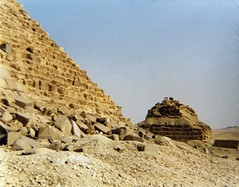 Part of the Pyramids of Giza. |
This actually also interests me, but in a very different way. The program had shifted from history to mythology. I kept watching.
When I was a kid, my mother introduced me to the then-popular work of one Erich von Däniken. I saw Chariots of the Gods? when it aired on TV. I found it fascinating, both for the glimpses of ancient cultures and the strange and often monumental artefacts they had left behind, and for the eerie way in which you could look on these things as evidence that extraterrestrials had been involved in their creation. I was at an age where aliens were scary, and some of the ancient artefacts—and how this program interpreted them—creeped me out a bit. It was... thrilling.
At the time, I was young and gullible, easily influenced by anything that seemed authoritative. So to me all of these alien astronaut theories sounded plausible. Maybe they were really true. Wouldn't it be cool if they were true? I wanted to believe they were true.
My childhood was a strange mixture of science—which my mother also loves—and mythology. They are both fascinating fields. But there is an important difference. Science deals with what really happens. Mythology deals with stories, stories ultimately composed by people.
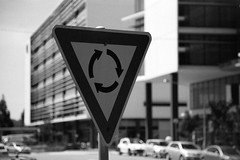 A non-Bermudan triangle, but still mysterious to some. |
Another TV show I loved as a kid was the series "In Search of..." This was a series hosted by Leonard Nimoy (one good reason to like it right there), in which every episode delved into some aspect of the mysterious, the unknown, or the supernatural. There were episodes about Bigfoot, the Loch Ness monster, ghosts, UFOs, Jack the Ripper, the Mary Celeste, ESP, the Bermuda Triangle, the Tunguska fireball, and so on. I enjoyed watching these, because they made the world feel like a huge, mysterious place, where almost anything could happen. The show was fairly neutral in its outlook, including a disclaimer that the views and theories presented by various interview subjects on the show were not meant to be definitive and that other explanations were possible.
As a case study in the examination of modern mythology, I think "In Search of..." did a fairly good job. It showed the stories and presented some interpretations and opinions about them, but explicitly didn't push them as truth. Unfortunately, some people latch onto the sort of wild ideas and speculations presented in shows such as this. Not only do they find them interesting and appealing, but they want them to be true so much that they start believing they are true.
 Pseudoscience in action! |
In fact, for this particular example, it's possible that you can find your own evidence in support of one of those statements. Has your dog or cat ever acted weirdly for no apparent reason, and then you felt a sudden chill down the back of your neck? Gosh, it could have been a ghost! But these atom things? I've never encountered anything in everyday life that would make me suspect that objects are all made of tiny invisible particles. What's more, thousands of other normal people have had creepy, ghostly experiences, but none of them have ever seen an atom.
It's not that hard to see why many people believe ghosts are real, despite that fact that all of the evidence in favour is circumstantial. But wait, isn't the evidence for the existence of atoms just as circumstantial? Mixing some gases and looking at the ratios - what sort of evidence is that for the idea that gases are made of tiny particles whizzing around? Rubbing amber and making bits of paper stick to it - how does that imply tiny particles too small to see?
The difference is that for atoms anyone can do the same experiments and get the same results. And that the idea of atoms explains these observations, plus a lot of other stuff about our world and our universe as well, and that these things can't easily be explained without them. And that you can use the idea of atoms to make models and predictions about how matter should behave under certain circumstances, and you can test those predictions and find that they work.
 What's the most likely explanation for this photo? (a) A ghost. (b) Photoshop. |
This gets to the heart of how science works. It is based not merely on observations, but on observations that other people can reproduce, reliably. I can go to any lab in the world and do the same experiments that established the existence of atoms, and get the same results, every time. There is no "haunted" house I can go to anywhere in the world that will reliably allow me and everyone else who goes there to experience a ghost[1].
This is the purpose of the peer review system of science publication. When a scientist asserts something, they must release their methods, observations, and interpretations to the world. Then other scientists can review their work, perform the same experiments, confirm the observations, discuss the interpretations, come up with other possible interpretations, and release all of this back into the world. After this review process, if the observations are reproducible, they become a matter of record. If not, then the original observations are not considered to be reliable.
While observations can be reproduced and accepted, the interpretations of scientific observations are more open for discussion. Often many teams around the world will put forward different hypotheses, or models. These will explain the observations, but will often have different details and be somewhat mutually inconsistent with one another. How do we sort out this mess? The proponents of the models use them to make predictions of how certain additional experiments will turn out. They propose new experiments to test and distinguish between the possible models. Then the new experiments are performed and the evidence will come down in favour of one model over the others. Or perhaps the evidence will disprove all of the proposed models, which sends the theoreticians back to the drawing board to come up with new models again.
This is how science establishes explanations and models that are consistent with the world around us. The idea of atoms has passed every single test that we have come up with and thrown at it - with flying colours. We have gone so far as to devise powerful instruments that let us take pictures of atoms (using means other than ordinary light, which is insufficient for the job), so we can, in some sense, now actually see them. There is absolutely no doubt any more that matter really is made of atoms.
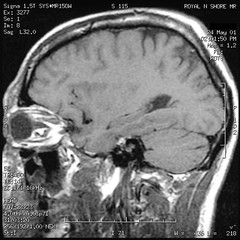 The human mind is amazing. |
Some parapsychologists - the ones who support the idea of ghosts - may argue differently. Why should we not trust them at least as much as the psychologists? Because psychology is a scientific field, with the mechanisms of open publication, peer review, repeatable experiment, and so on in place. People aggressively test the findings of psychologists with regard to the functioning of the human brain, and can reproduce the results. Parapsychology is not a scientific field, it is a pseudoscientific field. When people aggressively test the findings of individual parapsychologists who claim to have observed ghosts, they find nothing.
The same sort of thing can be said about many fields: monster hunting, UFOlogy, alien abductions, astrology, homeopathy. And ancient astronauts.
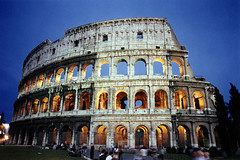 Did the Romans need alien help to build this? |
This is a logical fallacy known as "argument from incredulity". The arguer can't imagine how something can happen without the intervention of some otherwise unsupported concept, therefore the concept must be true. This is false, because even if you can't imagine how ancient civilisations could possibly have built the Pyramids or whatever, that doesn't mean there isn't some mundane and perfectly reasonable explanation. In fact, archaeologists have proposed many possible ways in which these ancient monuments could have been built. What's more, people have tested them and shown that it's possible - using smaller scale constructions, but these can be scaled up simply by multiplying the time and labour involved. The typical response from an ancient astronaut proponent is to dismiss such work and cling to their belief that it's impossible.
I found it very sad that these interview subjects were so willing to throw away objectivity and to argue their case from such a position. When I was a kid I found these ideas of aliens fascinating, and I wanted to believe they were true. But discovering that the ancient human civilisations had the abilities to build these monuments all by themselves made it unnecessary for these elusive ancient astronauts to exist. Reality won. Once you start ignoring the real world just so you can hold onto appealing beliefs, you are walking the path of pseudoscience.
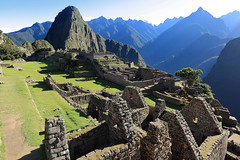 A product of human ingenuity. |
How did ancient civilisations build monuments? (1) They did it through human ingenuity and hard work, which we have been able to replicate and demonstrate was possible. (2) Aliens from another world came and helped them, leaving behind no physical evidence that they did so, and they remain hidden and unproven to this day.
Which is the more complex explanation that requires unlikely assumptions to work? The answer should be obvious. Cut it away with Occam's razor and you are left with the most likely explanation. It may not be as romantic or thrilling in some sense.
But, you know, realising that humans could do these amazing things so long ago, that's romantic and thrilling too. And it has the advantage of being much, much more likely to be the truth.
|
LEGO® is a registered trademark of the LEGO Group of companies,
which does not sponsor, authorise, or endorse this site. This material is presented in accordance with the LEGO® Fair Play Guidelines. |